
The Ultimate experience of Salkantay Trek - Peru
Known as the "alternative Inca Trail," the Salkantay Trek offers a mix of dramatic landscapes, from soaring snow-capped peaks to lush cloud forests and tropical valleys.
TRAVEL STORIESSOUTH AMERICA
Over six days, we traversed high-altitude passes, walked alongside glaciers, crossed rope bridges, and even explored remote coffee plantations. Along the way, we learned about the rich history and culture of the Andes, met incredible people, and capped it all off with a visit to the majestic Machu Picchu.
If you’re looking for a unique and rewarding adventure in Peru, the Salkantay Trek is not to be missed. Follow along as we recount every step of our journey, from preparation to the awe-inspiring finale!
Nature's Majesty: The Landscape of Peru
Peru is a nation blessed with an extraordinary blend of landscapes, offering a dramatic showcase of nature's artistry. From the jagged peaks of the Andes Mountains that display their rugged elegance to the vibrant greenery of the Amazon rainforest, the country is a testament to nature's majesty. Each region presents a unique ecological narrative, rich in biodiversity and profound beauty.
The Andes serve as the spine of the country, offering exhilarating hiking trails such as the renowned Salkantay Trek, known for its breathtaking vistas and challenging terrain. This trek allows adventurers to ascend to elevations over 4,600 meters, where they are greeted by glacial lakes and majestic snow-capped mountains. As the sun rises, the golden light paints a stunning palette across the rugged landscape, evoking a deep sense of wonder and introspection. The trek weaves through traditional Andean villages, where the local culture embraces the spiritual connection with the land, evident in their customs and reverence for nature.
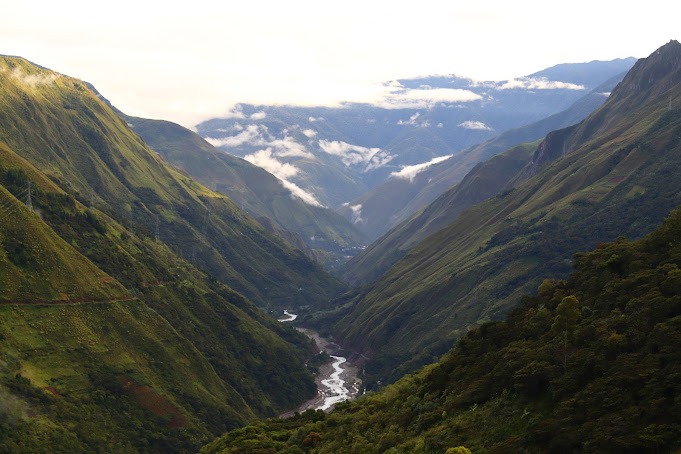

Our Personal Journey Through Peru: A Dream Adventure
Our Peruvian adventure began in Lima, and it was the perfect introduction to a country full of rich history, vibrant culture, and unforgettable experiences. Here's a look at how we explored this incredible country, from its coastal capital to the highlands, jungle, and beyond.
Lima: Culinary Capital
We arrived in Lima, staying in the vibrant neighborhood of Miraflores, and immediately felt the energy of the city. Lima, known for its world-class cuisine and picturesque coastal views, was the perfect place to start our journey.
On our first day, we stayed close to Miraflores, wandering through its charming streets, exploring the Larcomar shopping center perched on the cliffs, and enjoying the views of the Pacific Ocean. The area felt modern yet full of history, with trendy cafes and shops tucked alongside art galleries and parks. We strolled along the Malecón, a scenic path along the cliffs, and marveled at the stunning sunset over the ocean.
We couldn’t resist trying Lima’s signature dish, ceviche, and headed to La Mar, a well-known cevichería. The freshness of the fish and the bold, tangy flavors made it the perfect introduction to Peru's culinary scene. Later, we stopped by El Cordano for a Pisco Sour and some churros, a delightful treat to end the day.
Spending our first day just exploring Miraflores was a wonderful way to ease into the trip. The coastal vibes, lively atmosphere, and delicious food were the perfect start to our Peruvian adventure.
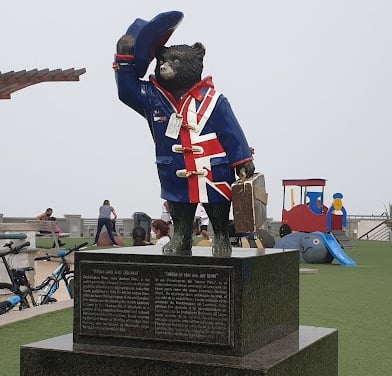

Cusco & The Salkantay Trek
After our time in Lima, we flew to Cusco, the historic heart of the Andes and the gateway to the Sacred Valley. We took a couple of days to acclimate to the high altitude before setting off on our trek.
We explored Cusco’s Sacsayhuamán, the massive Inca fortress that offers panoramic views of the city. The San Pedro Market was a lively spot, where we tasted local fruits and picked up handmade souvenirs. We spent time in Plaza de Armas, where we admired colonial-era buildings and enjoyed the buzzing atmosphere of Cusco’s central square.
After acclimatizing, we embarked on the Salkantay Trek, a challenging but rewarding adventure. The trek took us through diverse landscapes, from snow-capped mountains to lush cloud forests. Our fantastic guide led us through the dramatic scenery, and each day brought new, breathtaking views. It was an unforgettable journey that pushed us physically while rewarding us with some of the most stunning vistas we’ve ever seen.
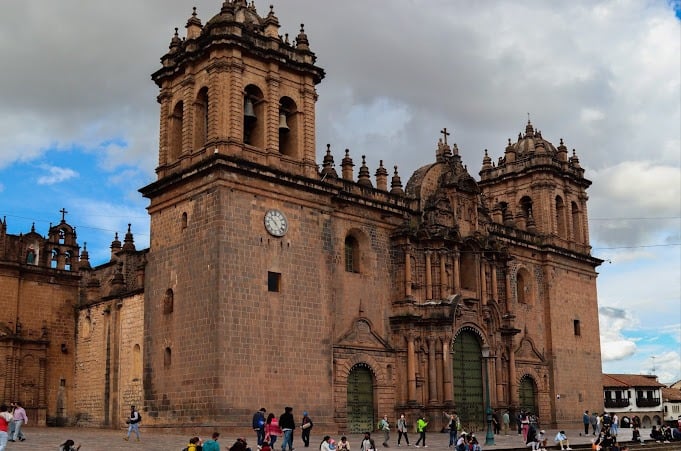

We kicked off our first full day of the trek with an early morning pick-up from our hotel in Cusco. Our guide, along with a private vehicle, took us on a scenic drive toward Mollepata, where we stopped briefly to take in the sights and stretch our legs. Along the way, we were treated to the beautiful Andean scenery—rolling hills, traditional villages, and the majestic peaks of the Andes.
Our first stop was the Tarawasi Archaeological Center, a lesser-known but fascinating site. This complex, located in the district of Limatambo, is thought to have been constructed by Inca Pachacuteq and served as a ceremonial center and rest stop on the road to Chinchaysuyo, one of the four regions of the Inca Empire. Exploring the ruins, we could feel the ancient energy of the site, with its pyramidal ceremonial altar and stone structures.
After visiting Tarawasi, we made our way to Mollepata for a short break before continuing to Soraypampa, our base for the day. Soraypampa is a small village at 3,869 meters (12,690 feet) above sea level, where we would spend the night at Lodge del Cielo, our charming lodge for the evening.
The following morning, we embarked on the Humantay Lake trek, a 4-hour round-trip hike that would take us through stunning mountain landscapes and bring us face-to-face with the glittering turquoise waters of the lake. Our guide ensured that we moved at a pace that allowed us to adjust to the high altitude, as we were now at over 3,800 meters.
The trek began with a steady uphill walk, and although the altitude made the hike a bit challenging at times, the stunning surroundings made it well worth the effort. As we ascended, we passed through rolling meadows dotted with wildflowers and were greeted by breathtaking views of the Humantay Glacier towering above us. The turquoise color of the lake, fed by the glacial waters of Humantay Mountain, was absolutely mesmerizing. The scenery felt surreal, as the crystal-clear waters reflected the surrounding snow-capped peaks.
After taking in the incredible scenery at Humantay Lake, we began our descent back to Lodge del Cielo. The return journey was quicker, but we still marveled at the changing landscapes and the peacefulness of the high-altitude surroundings.
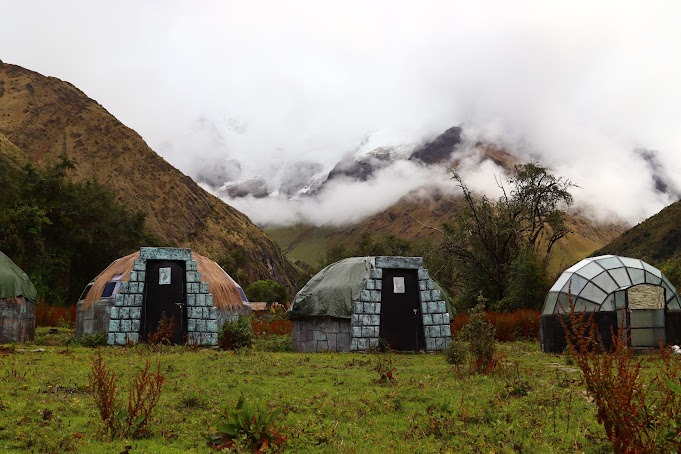

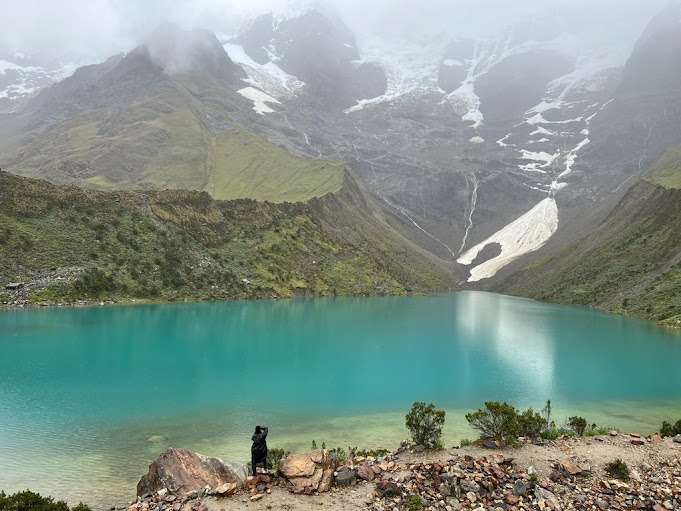

The next day of our trek was the most physically demanding but also the most rewarding. We started early, with the goal of reaching the Salkantay Pass, the highest point of the entire trek, at 4,630 meters (15,190 feet). The morning air was crisp, and the landscape around us transformed as we gained altitude. The trail wound through high-altitude grasslands, with breathtaking views of snow-capped peaks and glaciers, including the mighty Mt. Salkantay, which loomed majestically in the distance. As we ascended, the challenge of the altitude became more pronounced, but our guide kept us moving at a steady pace, making sure we took plenty of breaks to acclimatize and stay hydrated.
Upon reaching the Salkantay Pass, the sense of accomplishment was overwhelming. We took a moment to absorb the sweeping views around us—an endless expanse of snow-covered mountains and rugged terrain. At this point, we were standing in the shadow of one of the highest mountains in the Andes. We couldn’t help but feel a deep sense of connection to the land, as if we were following the same paths the Incas once traveled.
After a brief rest at the pass, we began our descent. The landscape began to shift as we descended into a lush, green valley. The stark, icy surroundings of the pass gave way to subtropical vegetation, and we marveled at the sudden change in environment. As we made our way to our next campsite, the contrast between the cold heights and the warm valley felt like entering another world. It was a physically challenging day, but the changing landscapes and panoramic views made every step worthwhile.
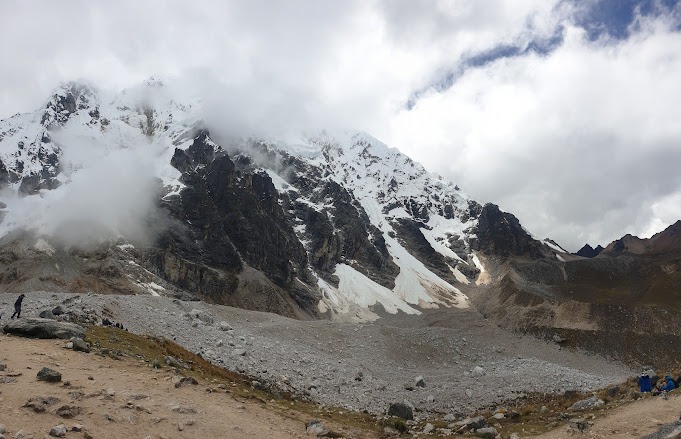

The next morning our trek took us deeper into the beautiful Santa Teresa River Valley, where the landscape shifted once again, revealing lush, tropical surroundings. The trail began with a gentle descent, taking us through rural, populated areas where life felt slower and more intimate. As we walked, we passed by a patchwork of banana, passion fruit, and avocado orchards—fragrant, verdant stretches that seemed almost otherworldly compared to the barren highlands we had left behind. The path followed the winding river, and we were greeted by the vibrant sounds of the flowing water and the calls of birds nesting in the trees. This was a different kind of beauty, one that spoke of life, growth, and connection to the land.
We passed by coffee farms where local families worked diligently, cultivating high-quality beans that are internationally revered. Our guide explained the importance of shade-grown coffee, a method that helps preserve the environment while producing beans with rich, distinctive flavors.
By the afternoon, we arrived at Lucmabamba, where we would spend the night in a charming lodge run by a local family. Nestled in a serene spot away from the busy trekking groups, this family-based lodge allowed us to connect with the local culture. As the sun set over the valley, we reflected on the incredible journey so far—today had been a day of connection, learning, and experiencing the warmth of Peruvian hospitality. It was a peaceful, enlightening end to a day filled with cultural immersion and natural beauty.


After a hearty breakfast to fuel us for the final day of our trek, we began our ascent towards Llactapata Pass. This stretch took us uphill for about 2-3 hours, where the terrain was both challenging and rewarding. As we climbed, the scenery around us became increasingly dramatic, with towering mountains and deep valleys. The effort of the climb was soon forgotten when we reached the Llactapata Pass at 2,736 meters (8,974 feet) and were rewarded with a breathtaking view of Machu Picchu Sanctuary in the distance. From this unique southeast perspective, few travelers ever get the chance to admire the magnificence of the ancient site, nestled among the mountains. It was an emotional moment for all of us, knowing that we were just a day away from our destination.
At the pass, we took a short break to explore the Llactapata Archaeological Site, which had been recently restored. The site was once a key location along the ancient Inca Trail and is believed to have been an important rest stop for travelers making their way to Machu Picchu. The ruins, though not as famous as Machu Picchu itself, were a fascinating reminder of the Inca's vast network of sacred sites. We wandered through the remains of structures that likely had both ceremonial and residential purposes, with incredible views of the surrounding valley and distant peaks. After soaking in the history and the stunning views, we continued our trek, feeling the excitement of being so close to our final destination.
We arrived at the Hydroelectric Village, also known as the “Train Station Village,” where we had the option to either continue our walk along the railway tracks to Aguas Calientes (approximately 3 hours) or take a 40-minute train ride (at an additional cost) to the village. Most of us decided to walk, following the tracks as they twisted through the jungle, the hum of the river accompanying us along the way.
Upon reaching Aguas Calientes, the bustling town at the base of Machu Picchu, we checked into our hotel, where we celebrated the end of our incredible trek with a hearty dinner. It was a perfect opportunity to reflect on the journey we had just completed—from the high, icy Salkantay Pass to the warm, green valley where we had learned about coffee and culture. Our guide gave us one last briefing about our visit to Machu Picchu the next day, and we couldn't help but feel a sense of accomplishment and excitement. Tomorrow, the final chapter of our adventure would begin as we set foot in one of the world’s most iconic archaeological wonders.
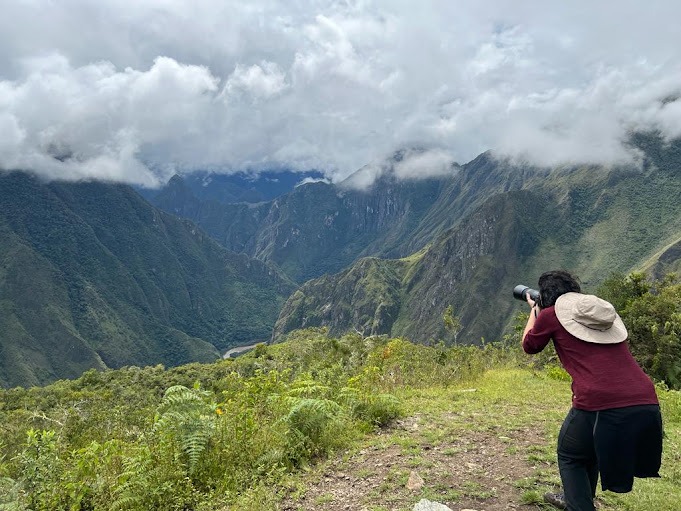

On the final day of our trek, we woke up early to enjoy a buffet breakfast at our hotel, eagerly anticipating our visit to Machu Picchu. After breakfast, we made our way to the bus station for the scenic 30-minute ride up to the Machu Picchu Sanctuary, perched high in the Andes. The excitement was palpable as we entered the sacred site, and our guide led us to the Guardian House, the perfect spot for the iconic photos that capture the majesty of the Inca citadel. From this vantage point, we had an unforgettable view of the entire site, with the intricate stonework of Machu Picchu set against the backdrop of lush green mountains.
Our guided tour began promptly as Machu Picchu Inca City officially opened at 6:00 am. We spent the next hour walking through the ruins, learning about their fascinating history and significance. After visiting the Guardian House, our guide gave us some free time to soak in the awe-inspiring views and take photos. We then had two options to further explore the site. The first was to climb to the Sun Gate, a one-hour trek that offers some of the best panoramic views of Machu Picchu and the surrounding mountains. For those who had completed the Inca Trail, this was where they would enter the citadel, so it felt extra special to be walking on the same path. Alternatively, we could continue exploring the Inca city, passing through the Main Plaza, the Temple of the Three Windows, and many other important structures. Our guide explained the historical significance of each site before leading us to the Sacred Rock, located near the entrance to Huayna Picchu, where we had some free time to wander and take in the atmosphere.
After our tour, we returned to Aguas Calientes via bus, where we boarded the Expedition train for the journey back to Ollantaytambo. From there, we transferred by private van to Cusco, where we arrived around 8:30 pm, bringing our incredible journey to a close. This final day in Machu Picchu was the perfect ending to our trek, a once-in-a-lifetime experience that left us with unforgettable memories of the ancient Inca civilization and the stunning landscapes of the Sacred Valley.
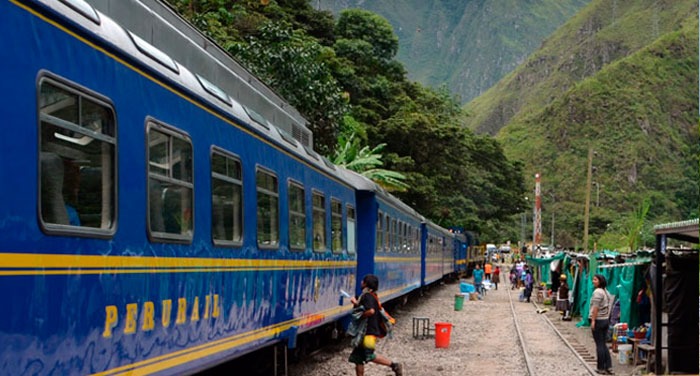

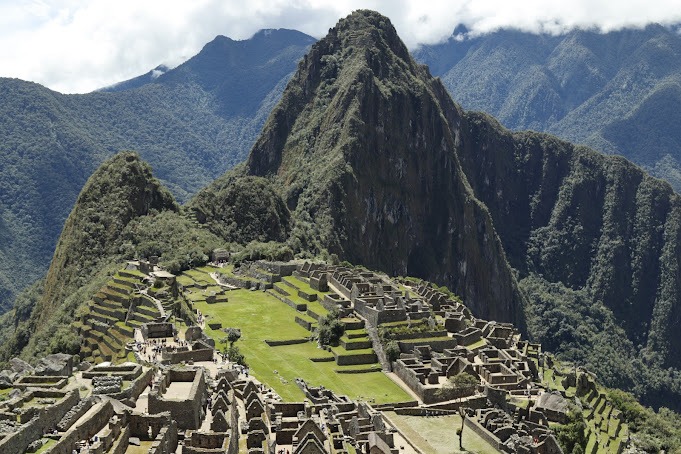




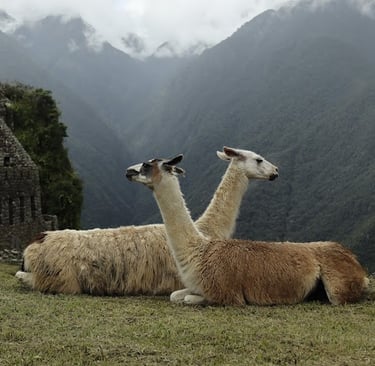
The Salkantay Trek offers something for every adventurer, from high-altitude challenges to cultural encounters and once-in-a-lifetime views of Machu Picchu. To immerse yourself in every step of this incredible experience, including detailed stories and tips, check out the full blog to Peru and the hiking itinerary!
